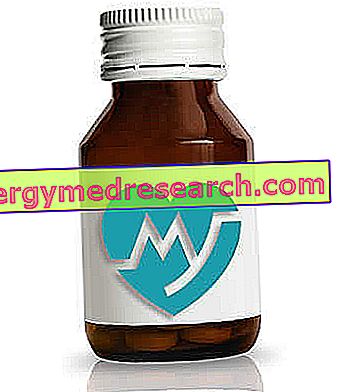Introduction
Among the officinal plants indicated for the treatment of venolymphatic insufficiency, a note of merit is due to the melilot: this plant, in fact - for the abundant quantity of coumarins - exerts a powerful phlegm-tonic action, in addition to boasting anti-inflammatory, atiedemigene and diuretic.

Melilotus in history
As we have seen, the sweet clover is characterized by its richness in coumarins: the phytotherapeutic importance of this plant was observed casually by studying cases of hemorrhagic syndrome in grazing beasts. It was observed that the cattle, after the ingestion of conspicuous quantities of deteriorated clover and clover, presented rather serious side effects, besides being predisposed to bleeding. The haemorrhagic syndrome was a consequence of the decrease in the levels of prothrombin in the plasma, connected to the presence of coumarin derivatives in the plants of sweet melons ingested by the animals. In those years (1941), Dr. Link of the University of Wisconsin, after learning the reason that triggered the syndrome in animals, synthesized for the first time dicumarol, which soon became the precursor of dicumarolic-type synthetic anti-aggregates.
It should be pointed out, however, that the sweet clover does not act directly on the coagulation of the blood, but carries out its action at the level of the venous walls, increasing its tone and reducing capillary permeability (an escin-like action). [from E. Campanini's dictionary of phytotherapy and medicinal plants ]
Botanical genres
The common melilot (Fam. Leguminose Papilionaceae), is known in botany with the name Melilotus officinalis, a plant that among other things does not differ much from the M. altissima species.
The two species differ mainly in the structure of the ovary and plant pods:
- Melilotus officinalis (temperate climate Europe): hairless legumes and ovary, pod consisting of transverse veins;
- Melilotus altissima (Germany): pubescent pulses and ovary, pod characterized by reticular veins.
Let M. officinalis, which M. altissima consist of the same phytocomplex, therefore the distinction of the two species has no reflexes in the phytotherapeutic field.
Other melilot species also include M. coerulea and M. alba, mainly cultivated for popular medical use.
Botanical analysis
The sweet clover is an annual herbaceous plant, bienne or perennial, about 80 cm high: the stem is hollow, branched and rather thin and thin, covered by alternate leaves composed of three typically lanceolate leaflets, ending with a serrated margin. The flowers, fragrant and grouped in axillary racemes, appear very small, very numerous, yellowish in color; only rarely is the corolla veined with blue or lilac stripes.
Belonging to the Leguminosae family, the fruits of the sweet clover are legumes: the pods, yellow or brownish, appear globular, erect, and contain a couple of seeds within them.
Active principles
In phytotherapy, the flowering tops and leaves are used in the sweet clover plant: the aerial parts contain mainly coumarins (0.4-1%), in particular 5, 6-benzo-β-pyrone, melilotin, coumaric acid glucosides o-hydroxy cinnamic (melilotoside), flavonoids (kaempferol, quercetin), terpene molecules, saponins, melilogenin (substance derived from oleanene) and tannins.
Therapeutic properties
As mentioned, the main activity of the sweet clover is exploited to counteract venous insufficiency; however, eupeptic, sedative and astringent activities are also used to combat nervous digestive disorders, difficulty in falling asleep and mild sleep disorders in general.
In folk medicine, the pleasant and aromatic infusion of sweet clover was used as a remedy for headaches and to facilitate digestion, in addition to promoting sleep: so much so that its activity was compared to that of chamomile.
Being the phytocomplex also consisting of tannins, at topical level the extract of melilot is used in the formulation of eye drops and mouthwashes, in addition to being indicated for gargling.
The chemical components that characterize the phytocomplex act in synergy also carrying out healing activities: for this reason, the extract is also used to promote wound healing.
Recent studies have also observed an antirheumatic activity - albeit mild - associated with melilot (topical application).
Coumarin compounds
We have seen that it is the coumarins that represent the main chemical constituent of the melody lotus phytocomplex. The ingestion of parts of melilot or of the entire deteriorated plant can generate rather serious side effects; in the battered melilot, in fact, the coumarins undergo a transformation into dicumarol (hydroxy-4-coumarin), a molecule which, by decreasing the synthesis of prothrombin, generates a marked anticoagulant effect.
| NB the anticoagulant activity is not carried out by the coumarin, MA from its transformation into dicumarol |
Coumarin is a specific symptomatology used in venous-lymphatic insufficiency: coumarins stimulate the endothelial reticulum system and at the same time enhance the proteolytic activity of macrophages. Consequently, the melilot is able to stabilize the erythrocyte membrane due to the better tissue oxygenation.
The topical application of extracts of melilot is useful in the treatment of edema (for phlogistic aetiology) and in the treatment of capillary fragility: these activities are rendered by the improvement of venous return and lymphatic circulation, as well as by the reduction of the permeability of the vessel wall ( anti-inflammatory and anti-edematous virtue).
For all the potentialities just described, the melilot finds application in the treatment of hemorrhoids, varicose veins, lymphatic stasis, ulcers of the lower limbs and thrombophlebitis.
Melilot: toxicity
At therapeutic doses, the melilot does not generate any side effects; in any case, its use is not recommended in case of ascertained or presumed hypersensitivity to one or more chemical constituents of the phytocomplex.
When the extract of meliloto is abused, the patient can complain of nausea, headache and dizziness: he can give narcosis.
Finally, being constituted by coumarins, the extract of melilot is not recommended in case of concomitant intake of salicylates and anticoagulants.
Meliloto in brief, summarized on Meliloto »



